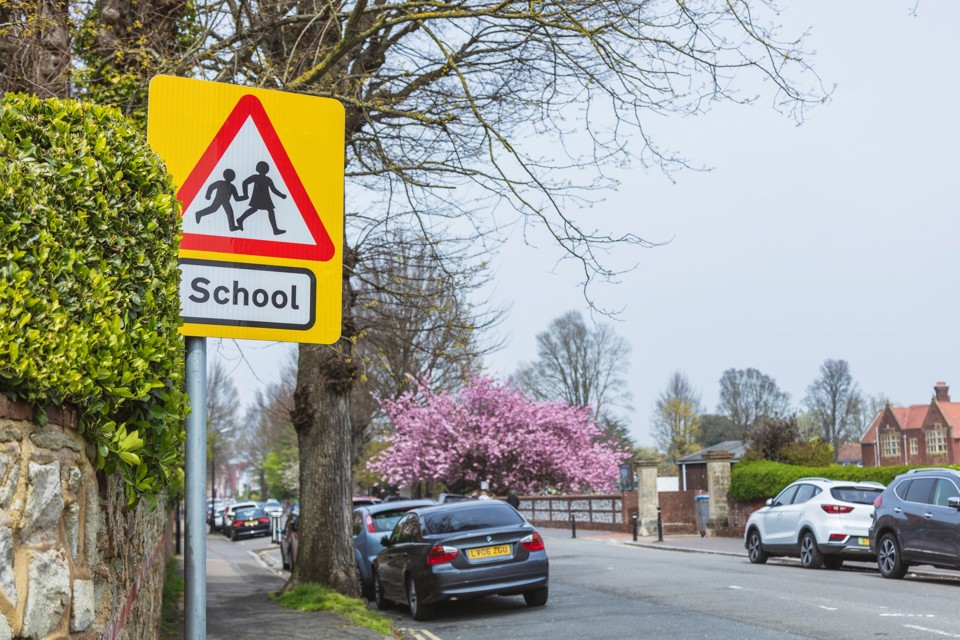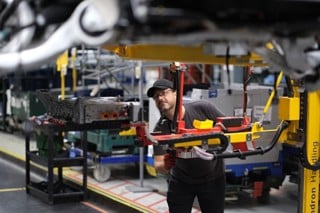With more than 400,000 drivers a year in London already hit with fines for entering School Streets, fleets are being warned about Government plans to expand their use.
For some time, Lightfoot has seen many of its clients and their drivers increasingly having to manage work around School Streets, in which vehicles are banned from certain roads at the times of the day children are going to and from school, with penalty charge notices (PCNs) issued if they enter.
The fleet technology provider has been working on solutions to help customers avoid fines, while also ensuring School Streets remain vehicle-free.
New Government guidance is intended to help create more of these schemes in England, with the Department of Transport (DfT) saying: “Millions more school runs across the country can now be transformed to be healthier, safer, greener and more active.”
Lightfoot fully supports these schemes, but as client services director Ben Bax explained, School Streets do still come with significant challenges for businesses and drivers.
“Businesses operating in cities such as London have had to plan to avoid entering School Streets at certain times of day, or risk £130 fines each time for doing so, for some time, and in 2022 alone reports claimed that over 400,000 drivers were hit with fines in the capital,” he said.
“There are around 700 School Streets in London and a further 200 in the rest of the UK.
So the potential scale of the issue as this expands across the country, with more than 300 separate councils able to implement these schemes, is quite clear.”
He added: “Without doubt, the areas around schools should be made safer and less polluting, and School Streets have been proven to help achieve this. But as the data from some local authorities operating them shows, there are still thousands of vehicles getting caught by cameras in the wrong place at the wrong time.
“Now the Government is keen to bring in more of these schemes across the country, thousands more businesses will find they need to plan how to avoid them.”
Hackney Borough Council is one of the DfT’s case studies on how to implement a successful School Streets scheme.
More than 40 roads in the borough are off-limits in the morning and afternoon as children travel to and from school, but in 2024 so far, according to its live PCN database, nearly 12,000 fines have been issued to non-eligible vehicles entering these streets.
Bax said: “Clearly, drivers are still entering School Streets then, and if you are a delivery driver going to a drop-off, or an engineer needing to get to a location, it can be difficult to do your job without falling foul of these permissions – not least because the ability to drive on certain streets can change during the day.
“As a business, how do you plan for this, especially as these schemes grow across villages, towns and cities, and are not centrally controlled in one place? Each scheme is run locally, and so the rules, administration, eligibility, enforcement criteria and even the operation times can be different.
“In the first place, how do you know where these streets are? There is a useful website from campaign group School Streets Initiative which tries to keep a list, but there is no official central resource.
“The administration challenge, to ensure drivers don’t enter the streets in the first place, and then to manage fines if they do, could be vast.
“Equally, it is down to each local authority to devise their own exemptions. These could range from specific vehicle registrations for homes or businesses in the street, up to any delivery driver or tradesperson.
“For regional or national businesses with fleets on the road, this could be a nightmare to manage.”
Some vehicles are allowed to enter School Streets during times when the restrictions are in operation, but their operators need to apply to the local authority and once approved, be added to a database.
Businesses will have to put in place policies about how fines are managed too.
For instance, Bax explained: “If you have a routing schedule and locations for employees to go to, and in the course of fulfilling that plan they enter a School Street, and receive a £130 fine, who pays it? The employer or the employee? This is an issue every business will have to clarify.
“There is also the cost of re-routing employees and deliveries. Avoiding the School Streets may not be optimal from an efficiency point of view, albeit that the safety of school children absolutely comes first.”
The DfT says that School Streets can hugely reduce pollution: its Hackney example cites that vehicle tailpipe emissions have reduced by 74% as a result.
“Our coaching technology means that drivers are driving more safely and polluting less in vulnerable areas such as around schools, and so I believe we already provide safer, cleaner traffic on these streets,” added Bax.
“Our customers are heavily invested in this approach too, but that doesn’t change the fact that they need a solution to ensure they are not on these streets when they shouldn’t be.
“Because we have been talking to them about the issue of School Streets for some time, we’ve been able to provide solutions.”
Where a School Street is in place already and is known to the customer, Lightfoot can set up locations to send alerts to the fleet managers if a vehicle enters the restricted road, to help manage compliance and drive down fines.
It can also provide reports to customers, giving them data of which vehicles are entering a School Street on a regular basis. This will help with registering vehicles for exemptions and potentially help a business when the consultation on a proposed School Street is in process.
Lightfoot can also provide data and times of vehicle locations that could help to dispute any erroneous fines.
Bax said: “We’re doing everything we can to help our customers navigate this new challenge because the better they manage it, the more successful the School Streets initiative will be, and the lower the cost to their business too. And that’s a win-win for everyone.”

























Login to comment
Comments
No comments have been made yet.